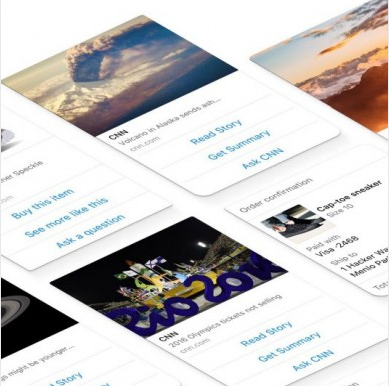 Imagine you’re chatting with your friends on Facebook Messenger to arrange drinks. Behind the scenes, chatbots are working to identify triggers in your conversation that suggest you may need a specific product or service. You arrange the time and location of where to meet, and up comes a prompt from Uber inviting you to book a car. Seamlessly integrated within Facebook Messenger, you book the car and return to your conversation. But this is old news already. We are fast approaching a world where social media channels will be used to manage all interactions between brands and customers. While the technology will be automated to deliver service at scale, the exciting part is that it will feel like a personalized experience that beautifully fits into the way you live your life.
Imagine you’re chatting with your friends on Facebook Messenger to arrange drinks. Behind the scenes, chatbots are working to identify triggers in your conversation that suggest you may need a specific product or service. You arrange the time and location of where to meet, and up comes a prompt from Uber inviting you to book a car. Seamlessly integrated within Facebook Messenger, you book the car and return to your conversation. But this is old news already. We are fast approaching a world where social media channels will be used to manage all interactions between brands and customers. While the technology will be automated to deliver service at scale, the exciting part is that it will feel like a personalized experience that beautifully fits into the way you live your life.
The benefits to customers and brands make this a no brainer. Customers will no longer need to delve into multiple websites or apps, or sift through emails to locate the right channel to communicate with a brand. Interactions will be easier and less hassle and most importantly, centralized in the app you use most. For brands, aside from having more seamless and positive interactions with customers, the benefits are a CEO’s dream: saving on operational costs by moving more functions to the unassisted online channel.
Customer behavior today already suggests an appetite for interacting with brands in a more intuitive way. Graphical user interfaces (GUI) are being replaced by natural user interfaces (NUI) as we use voice control to trigger Siri on our Apple Watch or Alexa on Amazon Echo. And the technology is getting better and better as artificial intelligence starts to live up to its name. AI robots are also predicted for mass adoption in the coming years: the much awaited Jibo is set for launch this autumn. What’s most interesting is that the technology powering AI is available to all, allowing anyone to create their own Facebook bots.
Some brands are already jumping on the opportunity. KLM is using Facebook Messenger bots to allow customers to access flight data, and Everlane allows you to shop and monitor your delivery also in the messaging service. The idea of Facebook Messenger being an “app for everything” is surely inspired by WeChat in China. Since the launch of peer to peer mobile payments within the messenger app in 2013, service integration has been rapidly expanding. Earlier this year, WeChat launched “City Services” that allows users to book a flight or taxi or even book a doctor appointment.
A future where brands fit more harmoniously into day-to-day behaviors is now upon us. For customers, this could mean only using one app with all the brands you ever need contained within it. And instead of summoning them when the need arises, they simply appear intuitively. For brands, imagine a zero cost operation with everything automated online, freeing you up to invest more heavily in R&D to create even better products or services.
For the brand and customer, the relationship is continuous and personalized. Buying a product signals the start of a partnership that feels nothing like CRM today, naturally leading to product upsells as the brand better understands your needs. And with everything held in one place, it makes sense for brands to come together to better serve you with complementary offers. Your relationship with a brand shifts from multiple disparate emails, apps and websites to a single conversational thread, where the context of who you are and the precise moment in your life is never lost.
Written by Andrea Stocks, Associate Director Brand, Added Value UK.


